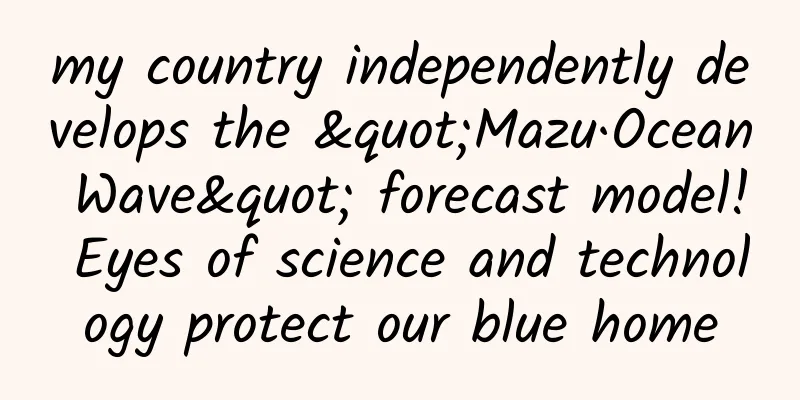I really want to ask: How is the ban on honking captured?

|
With the acceleration of urbanization, traffic problems have increasingly become one of the challenges faced by many cities. In order to alleviate noise pollution and improve the urban environment, more and more cities have begun to implement "no honking" regulations. However, how to effectively monitor drivers' behavior, especially when it is impossible to enforce the law on the spot, has become a major problem. Fortunately, the rapid development of modern technology has provided new ideas for solving this problem. However, have you ever wondered how the prohibition of honking is captured? 🔺Image source: [1] Noise pollution and the origin of the "no honking" rule Noise pollution in cities mainly comes from transportation, especially car horns. Studies have shown that long-term exposure to high-decibel noise will not only affect people's hearing health, but also lead to anxiety, insomnia, cardiovascular disease and other problems. The World Health Organization (WHO) points out that continuous noise exceeding 65 decibels will pose a threat to human health, and the sound of car horns in cities often exceeds this standard. 🔺Image source: [4] In addition, traffic noise also seriously affects the quality of life of urban residents . Especially in schools, hospitals and residential areas, frequent honking interrupts normal study, rest and work, becoming a chronic problem in urban management. Therefore, many cities have introduced "no honking" regulations, hoping to reduce noise pollution by strictly restricting honking behavior. In order to solve the problem of noise pollution, many countries and cities have passed legislation to clearly prohibit vehicles from honking their horns in specific areas. For example, in China, many cities have designated urban main roads, school areas, residential areas, etc. as no-honking areas. In these places, drivers are only allowed to use their horns in emergencies, and honking in other situations will be punished. 🔺Image source: [2] Although this regulation provides a legal basis for urban noise control, how to supervise and punish violators has become a difficult problem in law enforcement. Faced with the movement of a large number of vehicles at different times and locations, traditional manual law enforcement methods are inefficient. For this reason, the "automatic capture" system relying on technological means came into being. The principle of the technology to prohibit honking To capture drivers honking their horns illegally, two key problems need to be solved: how to accurately identify the source of the horn, and how to associate the horn with a specific vehicle. To address these two issues, scientists and engineers have developed a complex acoustic recognition and monitoring system. 1 Acoustic Positioning Technology The sound of a whistle is a high-frequency sound that is transmitted through sound waves. In order to accurately locate the source of the whistle, acoustic positioning technology becomes the core. The basic principle of this technology is to use an array system composed of multiple microphones to determine the source of the sound by analyzing the transmission time difference of the sound wave. 🔺Image source: [5] Specifically, the system is equipped with multiple high-sensitivity microphones, usually three or four, forming a two-dimensional or three-dimensional microphone array. When a vehicle honks, the sound waves will reach these microphones in different time sequences. By comparing the time difference when each microphone receives the sound, the system can accurately calculate the location of the sound source, that is, which car is honking at a specific location, based on the propagation speed of the sound wave and the time difference formula. 🔺Image source: [6] This technology is similar to triangulation , which uses the time difference and sound intensity at different points to calculate the location of the sound source. 2 Sound feature recognition and filtering The sound of a car horn is a sound with a specific frequency and sound wave shape, but in the city, other noises such as engine noise, pedestrians talking, and construction noise can also interfere with the system's recognition. Therefore, the horn capture system needs to have a good sound feature recognition function to accurately distinguish the horn from other noises. The system uses a machine learning algorithm to input a large amount of vehicle horn sound data in advance for training, so that it can recognize the specific frequency and waveform characteristics of the horn sound. Once the system detects a sound that meets these characteristics, it will start working and capture relevant data. 3 Correlation between sound source and vehicle Another difficulty in capturing honking behavior is accurately matching the sound source to a specific vehicle. To achieve this, the system usually combines acoustic positioning technology with video surveillance technology. 🔺Image source: [3] When a horn sound is captured, the acoustic positioning system first determines the specific location of the sound source. At the same time, the high-definition camera installed on the road will capture the corresponding vehicle image based on the location of the sound source. By matching the location of the sound source with the camera shooting angle, the system can determine which car made the horn sound. 4 Vehicle information capture and processing After determining the vehicle that honked, the system will automatically perform license plate recognition on the vehicle. Modern traffic surveillance cameras generally have high-definition and night vision capabilities, which can clearly capture license plate numbers in various lighting conditions. After recognizing the license plate, the system will record and save the license plate information together with the honking behavior as a basis for subsequent penalties. 🔺Image source: [7] Some more advanced systems can also automatically upload data to the backend of the traffic management department for further processing. These data include the specific location of the vehicle, the time of the horn, the sound source location data and the vehicle's license plate information, ensuring the accuracy and traceability of the entire law enforcement process. References [1]https://mp.weixin.qq.com/s/r4K5msWI-9CNkZGRYqpQsQ [2]https://mp.weixin.qq.com/s/Lxs1nvywJUmo3660eaXBiQ [3]https://mp.weixin.qq.com/s/PPBuxi3CGXyaaoqNDLliaQ [4]https://mp.weixin.qq.com/s/7kC0r5nH2n122DZ3jlUBEw [5]https://www.sohu.com/a/231633237_389742 [6]https://www.thepaper.cn/newsDetail_forward_27373336 [7]https://www.sohu.com/a/409077885_477577 Planning and production Source: Science Popularization (ID: lxkp-cstam) Editor: Yinuo Proofread by Xu Lai and Lin Lin |
>>: Is strabismus just "crossing the eyes"? Doctors remind you to pay attention to these things
Recommend
Are you a little nervous about the start of school? These psychological adjustment tips will help you avoid the "back-to-school syndrome"!
Recently, as the holiday is running out, the numb...
APP promotion: 9 strategies to open a restaurant at the lowest cost
Rental strategy 1: Travel during off-peak hours a...
Why doesn't the MacBook Air have a Retina display?
Another Apple product launch has ended, and we st...
91 Ten Articles: BYD's entire series is equipped with blades, and 40% of users hope that Xiaomi's car will be priced at 100,000 yuan
1. All BYD's pure electric vehicles on sale a...
A lone brave man in the deep mountains and valleys - The Ancient Tea-Horse Road
A lone brave man in the deep mountains and valley...
【Cross-border B Brother】Independent station potential hot-selling product selection recommendation, the order rate of tested products is as high as 80%
【Cross-border B Brother】Recommendation of potenti...
Living room entertainment leads smart home, ZIVOO Qingmang box triggers qualitative change in product experience
TV boxes, which were created to enhance the Inter...
Is it extremely painful? Can it save lives? A picture reveals the true face of gastrointestinal endoscopy
The examination process may be very uncomfortable...
Safety secrets on the return journey during the Spring Festival travel rush: Why don’t high-speed trains require seat belts?
There are seat belts on airplanes and cars, but w...
7 Micro-Interactions to Improve User Experience
[[141728]] As we all know, we always judge a book...
Zhihu product analysis report!
Preface As Internet traffic has peaked, new traff...
How creative is GPT-4? The divergent thinking that is unique to intelligent creatures has surpassed that of humans!
Divergent thinking is considered to be the core i...
Illustration +1! What does the hairiest beetle in the world look like? | Expo Daily
Illustration +1! What does the world's hairie...
Only those with money can do what they want: Who will be the final winner in the cloud computing market?
When it comes to the hot cloud computing market, ...
Four low-Earth orbits are running simultaneously! my country's "precipitation star" has become a regular star!
On May 1, Fengyun-3G, which we often call the &qu...









